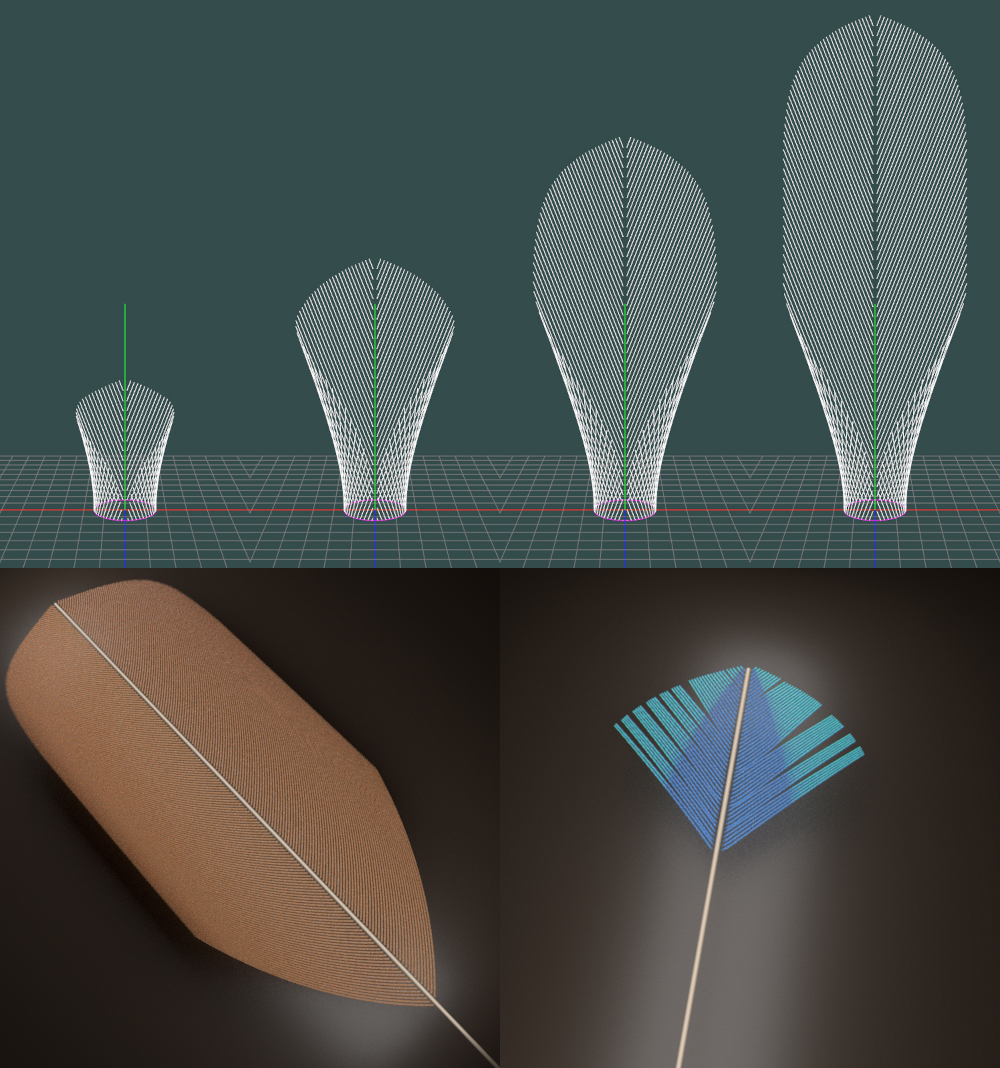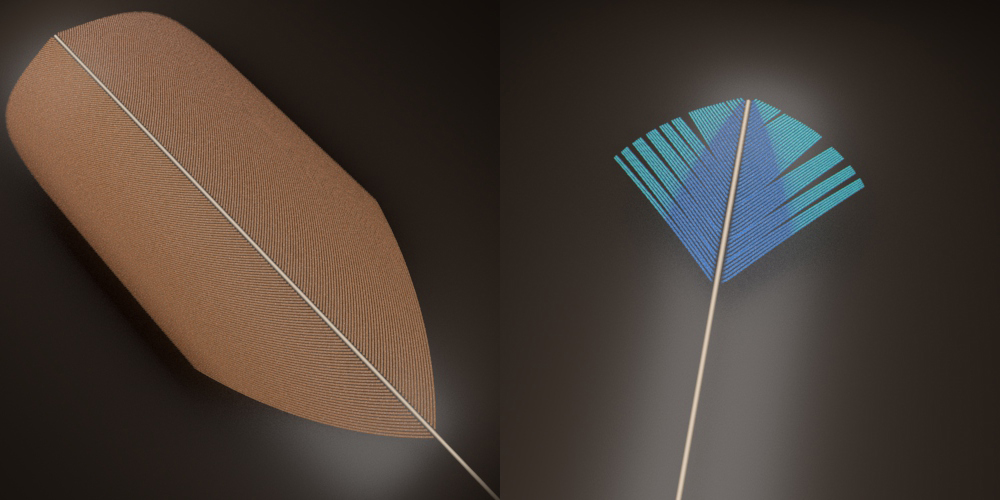Feathers are sophisticated skin appendages on bird skin, with massive fiber curves (called barbs) branching out from a shaft. Each barb uses its hooklets (called barbules) to further interlock with each other and form two surfaces. We propose a biological modeling scheme that follows the natural feather development to procedurally reproduce common biological characteristics on outputs. Based on our investigations of biology studies, we choose to generate pathlines of particles in a velocity field to emulate the helical growth of barb curves inside a cylindrical feather follicle, then apply forward kinematics to pathline curves to mimic the unfurling of a feather after its follicle sheath breaks off. We also develop an optional barb snapping algorithm to mimic the geometric restriction from barbules between barbs. Our modeling scheme can achieve feather growth simulation in 3D rather than 2D space, and it is also the first step to prove that it is feasible to alter macroscopic feather geometry via microscopic barbules, both of these topics are less discussed in the field of CG feather modeling. Because of the high compatibility with biology theories, our scheme is expected to be a better basis for discussing other CG feather topics.
Presentation Video
Papers
- Jiajun Zhang, Takashi Kanai: “Biological Modeling of Feathers by Morphogenesis Simulation”, 2020 International Conference on Cyberworlds (Caen, France, 29 September – 1 October 2020), pp.63-70, 2020.
[Paper (author’s version)][Paper (publisher’s version)]

